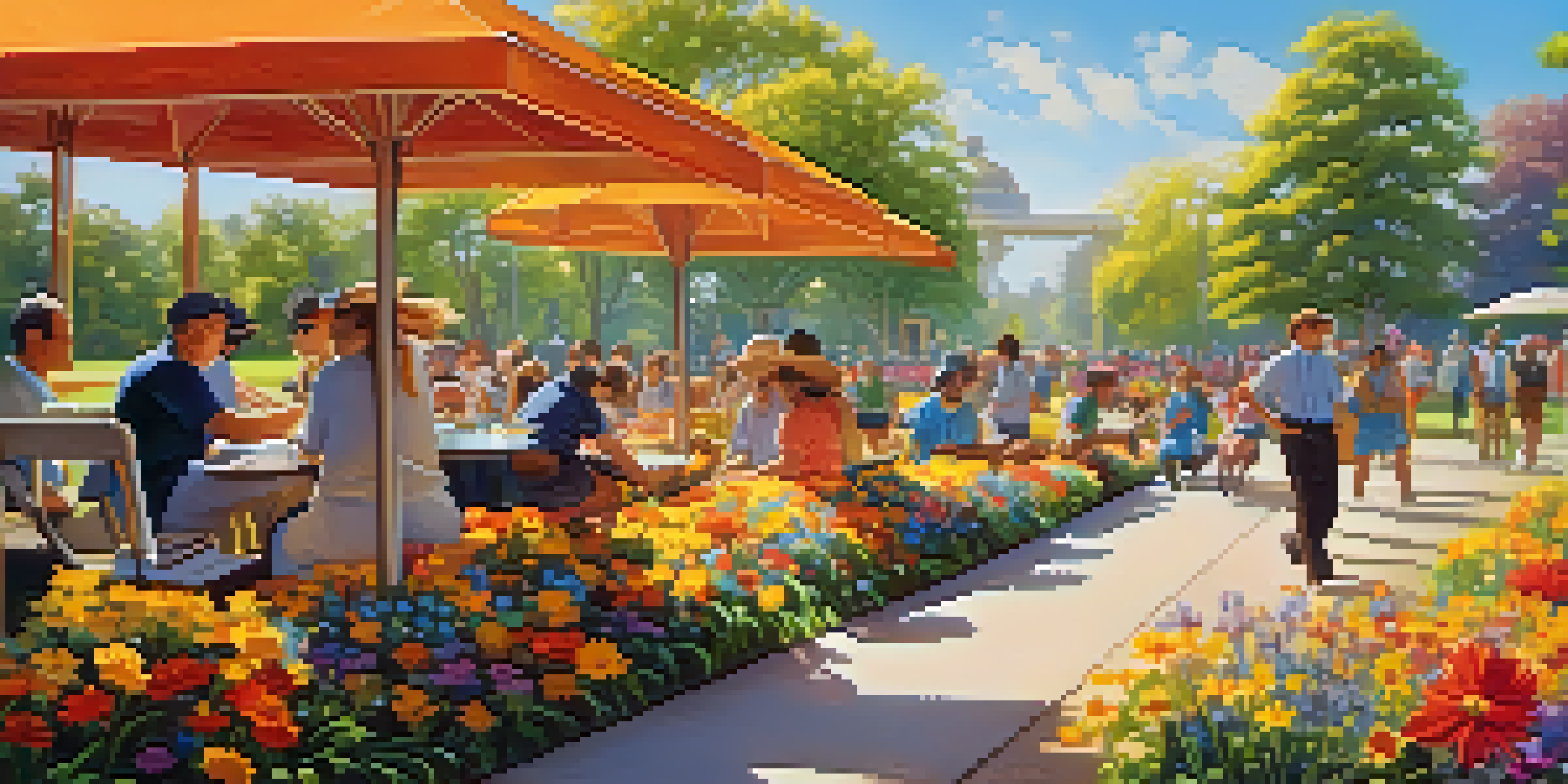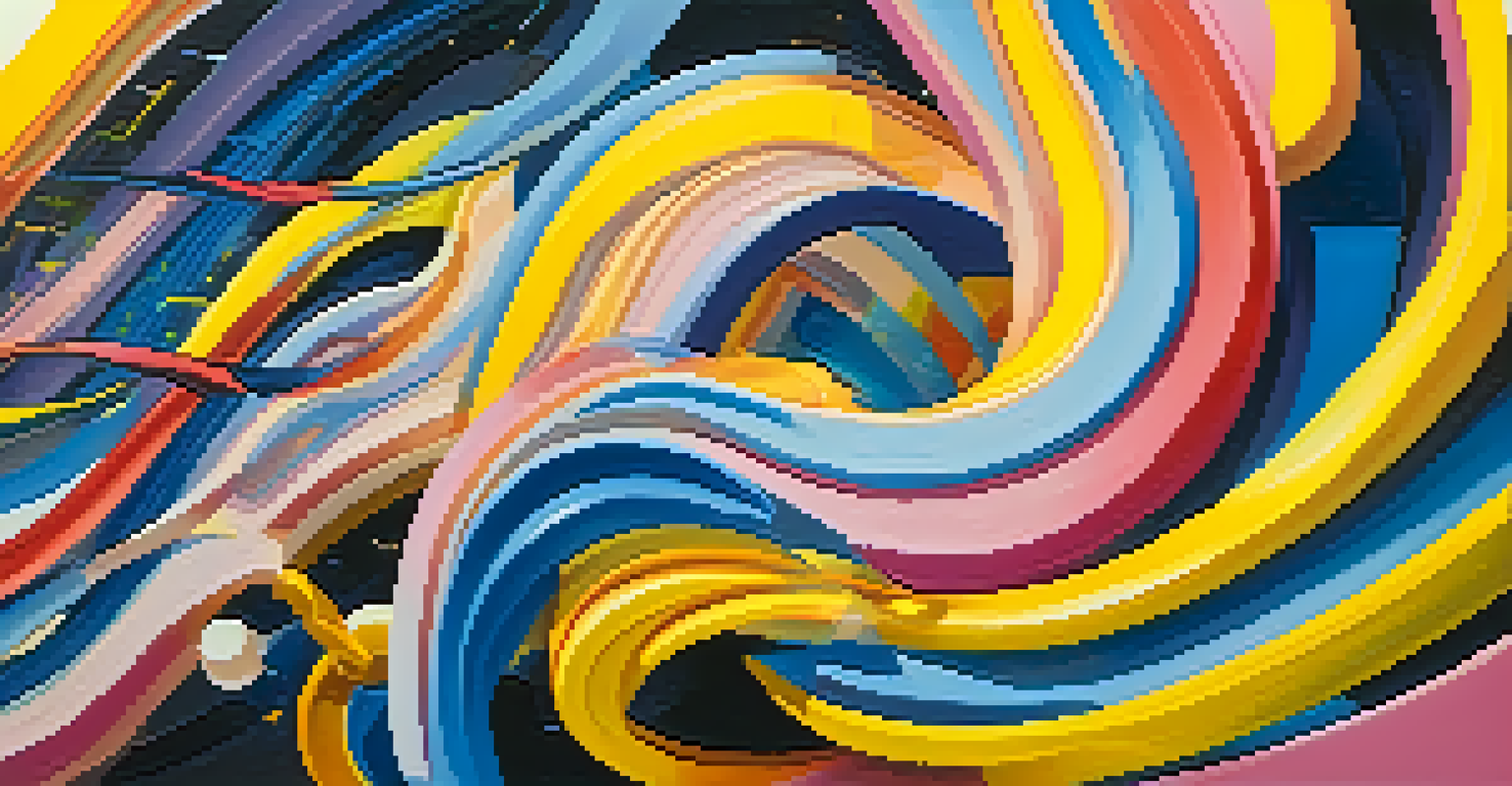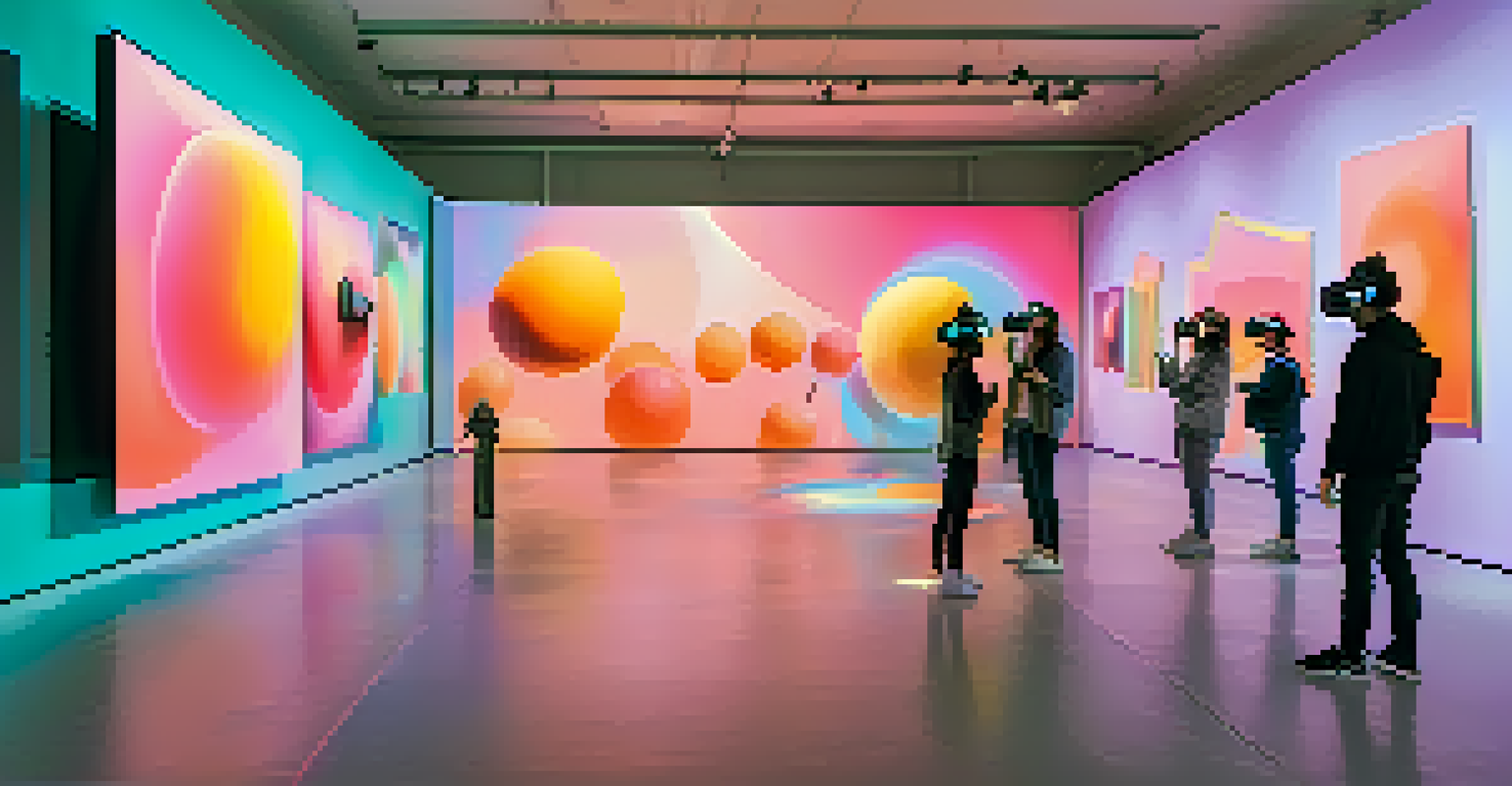The Sound of Color: How Music Influences Visual Perception

Understanding the Connection Between Music and Color
At first glance, music and color may seem like two separate realms, yet they share a fascinating relationship. Both are integral to our sensory experiences, influencing how we perceive the world around us. Research shows that certain sounds can evoke specific colors in our minds, creating a unique interplay between auditory and visual stimuli.
Color is the keyboard, the eyes are the harmonies, the soul is the piano with many strings.
This phenomenon is known as synesthesia, where stimulation of one sensory pathway leads to involuntary experiences in another. For example, a person might hear a particular note and visualize a vibrant blue or a soft yellow. Such cross-sensory experiences highlight the brain's intricate wiring and its ability to blend different types of information.
Furthermore, musicians often describe their creative process as colorful, using adjectives that relate to hues when discussing their compositions. This illustrates how deeply intertwined our senses can be, fueling both artistic expression and emotional resonance.
How Music Affects Our Mood and Visual Interpretation
Music has a powerful effect on our emotions, which in turn influences how we perceive colors. For instance, upbeat and lively tunes may make us see colors as brighter and more vivid, while slower, melancholic melodies might dull our perception. This emotional response can alter not just our mood, but also the way we visually interpret our surroundings.

Consider a sunny day at a park. Listening to cheerful music can enhance the colors of flowers, making them appear more saturated and lively. In contrast, if you're listening to a sad song, the same scene might seem muted or less inviting. This demonstrates how our auditory experiences can shape our visual reality.
Music and Color Share a Connection
The interplay between music and color reveals how auditory experiences can evoke specific visual perceptions.
Moreover, studies indicate that certain genres of music can consistently evoke similar emotional responses among listeners. This shared experience further highlights how music can act as a lens through which we interpret the world, blending sound and sight in meaningful ways.
The Science Behind Music and Color Associations
Scientists have long been intrigued by the relationship between music and color, leading to numerous studies exploring this connection. One theory suggests that specific frequencies of sound correspond to particular colors on the visible spectrum. For example, higher frequencies might be associated with brighter colors like yellow and white, while lower frequencies could relate to darker shades such as blue and black.
Music is the shorthand of emotion.
In a study conducted by researchers, participants were asked to listen to various musical compositions while selecting colors that they felt matched the music. The results revealed striking patterns, with certain combinations consistently eliciting similar color choices. This suggests that our brains may have inherent associations between sound and color.
These findings not only deepen our understanding of sensory perception but also open doors for applications in fields like art therapy, where combining music and color can enhance emotional well-being and creativity.
The Role of Cultural Context in Music-Color Perception
Cultural background plays a significant role in how we interpret both music and color. Different cultures often associate specific colors with particular emotions or meanings, which can affect how music is perceived. For example, in Western cultures, the color red might evoke feelings of passion or anger, while in some Eastern traditions, it symbolizes luck and happiness.
When people from diverse backgrounds listen to the same piece of music, their color associations may vary widely based on these cultural contexts. This highlights how deeply rooted our sensory experiences are in our upbringing and societal norms, showcasing the uniqueness of individual perception.
Cultural Context Shapes Perception
Cultural backgrounds influence how individuals associate colors with music, highlighting the uniqueness of sensory experiences.
Understanding this cultural dimension can enrich our appreciation for the arts, allowing us to see how music and color interact in varied and meaningful ways across different societies.
Artistic Expressions: Musicians and Visual Artists Unite
The relationship between music and color isn't just a topic for scientific inquiry; it's also a canvas for artists. Many musicians and visual artists draw inspiration from one another, creating cross-disciplinary works that fuse sound and sight. For instance, some musicians create visual art to accompany their music, translating melodies into colors and shapes.
An iconic example is Wassily Kandinsky, a painter who believed that colors could evoke musical sensations. His abstract works often reflect the rhythms and tones of the music he cherished, blurring the lines between auditory and visual experiences. This synergy can elevate both art forms, inviting audiences to engage with them on multiple sensory levels.
Through these collaborations, we witness the embodiment of music in visual form, allowing us to experience a richer tapestry of creativity that speaks to both the ears and the eyes.
Practical Applications: Using Music to Enhance Visual Creativity
Understanding the interplay between music and color can have practical applications in everyday life, especially in creative fields. Designers, artists, and marketers often use music strategically to evoke specific emotions and enhance visual aesthetics. By pairing the right sounds with visual elements, they can create more impactful experiences.
For example, a graphic designer might select an upbeat track to accompany a vibrant advertising campaign, aiming to uplift viewers and inspire action. Similarly, filmmakers carefully curate soundtracks to enhance the emotional depth of their visuals, guiding audience reactions through sound.
Artistic Collaboration Enhances Creativity
Musicians and visual artists often collaborate, merging sound and sight to create richer, multisensory artistic expressions.
By harnessing the relationship between music and color, creatives can elevate their work, crafting experiences that resonate with audiences on both emotional and sensory levels.
The Future of Music and Color: Trends and Innovations
As technology advances, the exploration of music and color continues to evolve, opening new avenues for innovation. Virtual reality (VR) and augmented reality (AR) experiences are increasingly incorporating multisensory elements, allowing users to see and hear in immersive environments. Imagine walking through a virtual art gallery where colors change in response to the music playing—a seamless blend of sound and sight.
Additionally, artificial intelligence (AI) is beginning to play a role in creating music that corresponds to visual elements. AI algorithms can analyze visual data and generate soundscapes that enhance the experience, pushing the boundaries of how we perceive and interact with art.

These trends suggest a future where our sensory experiences will be more intertwined than ever, inviting us to explore the symphony of colors and sounds that shape our realities.